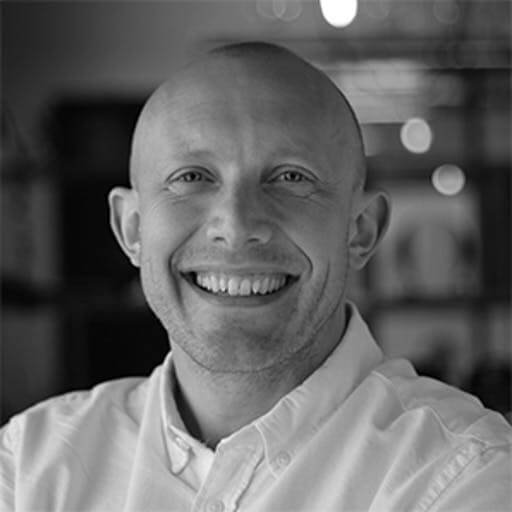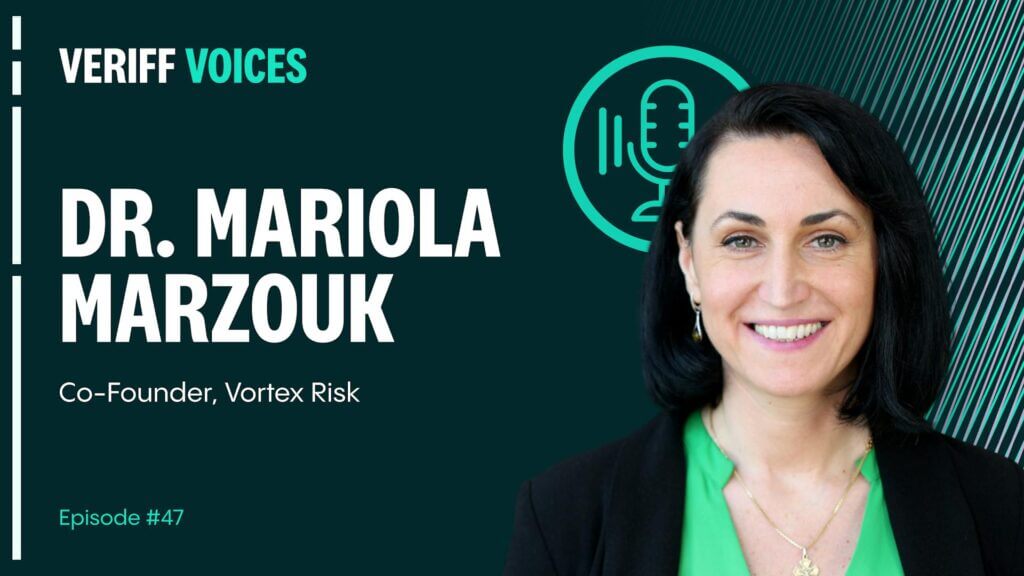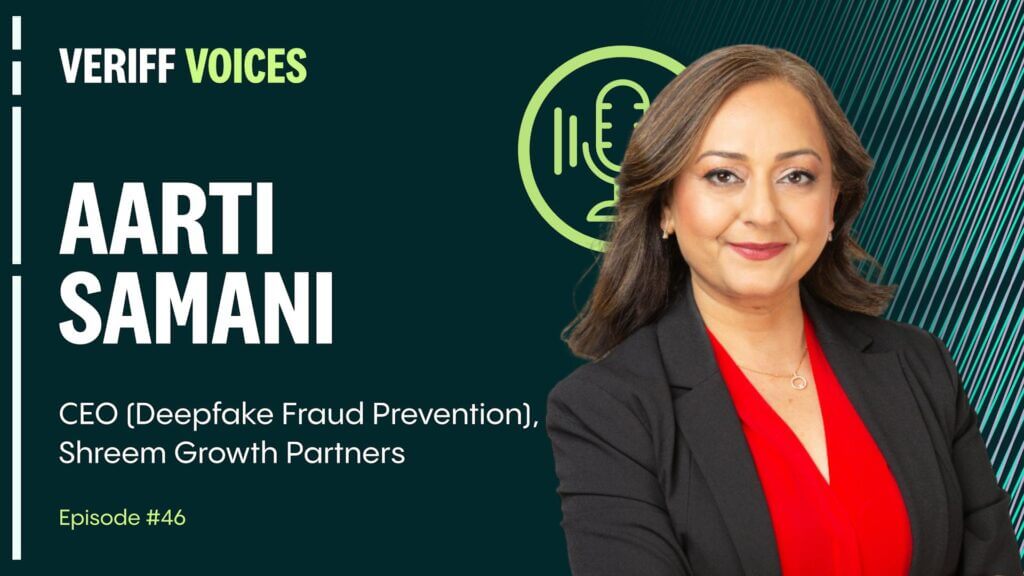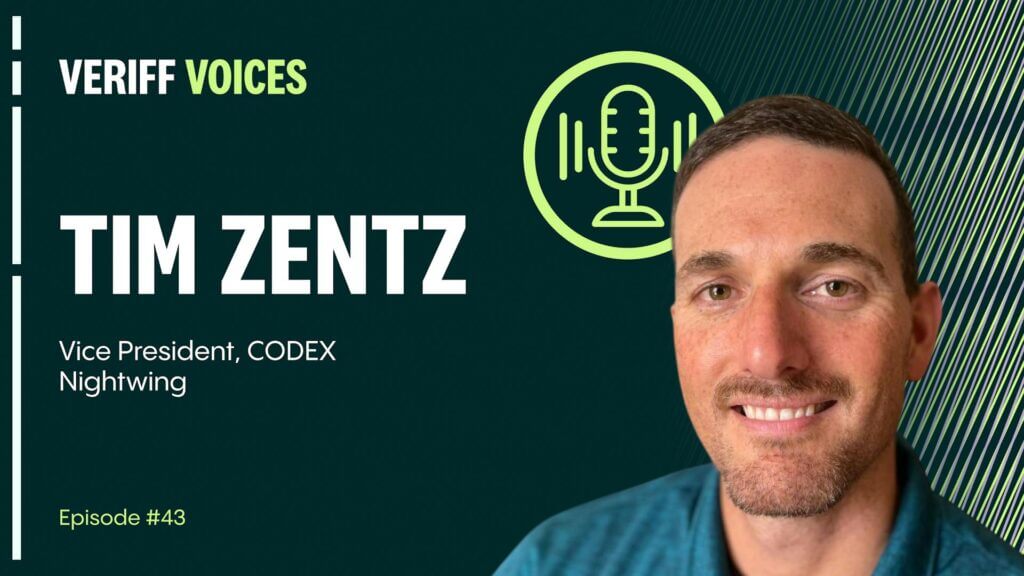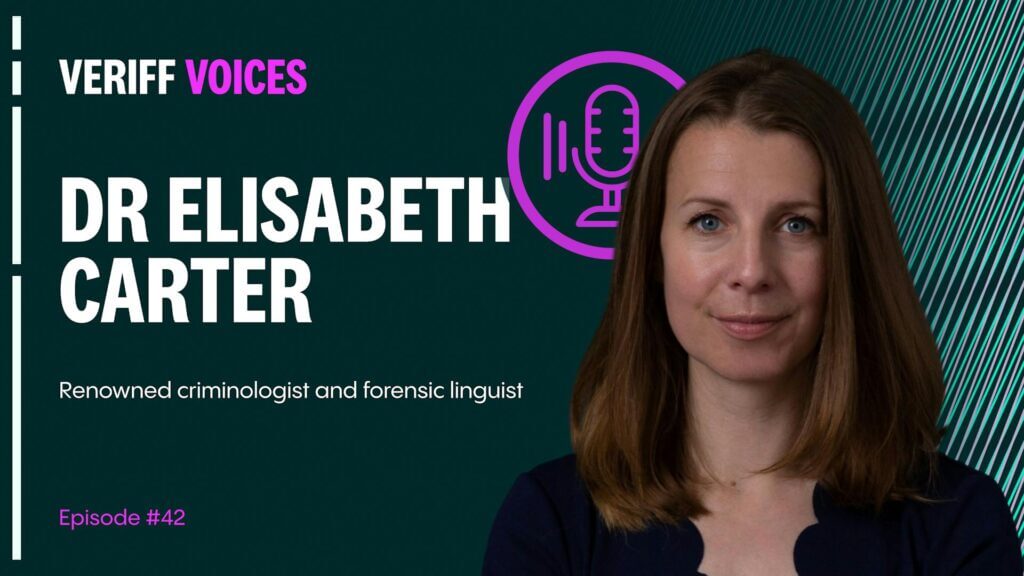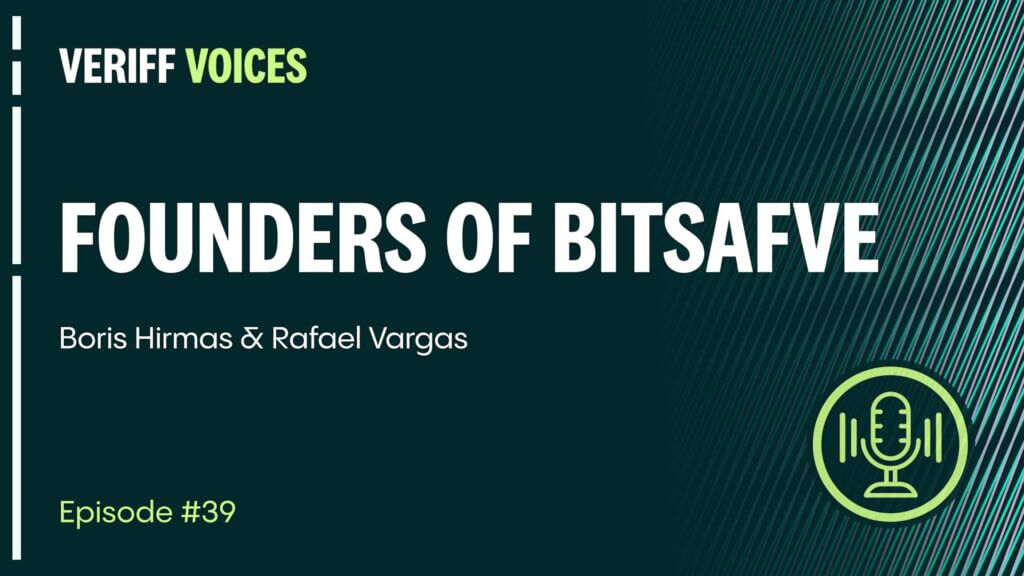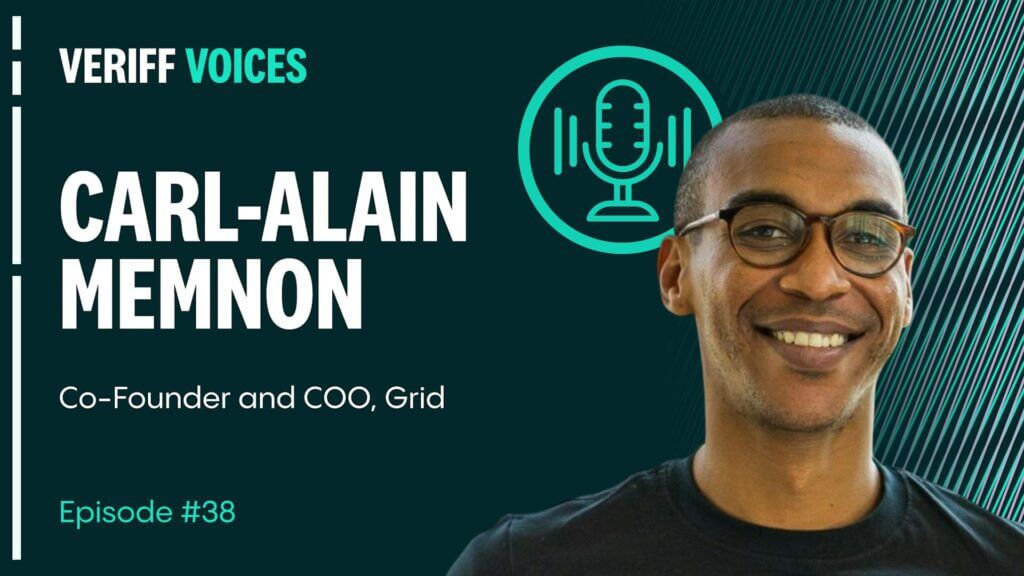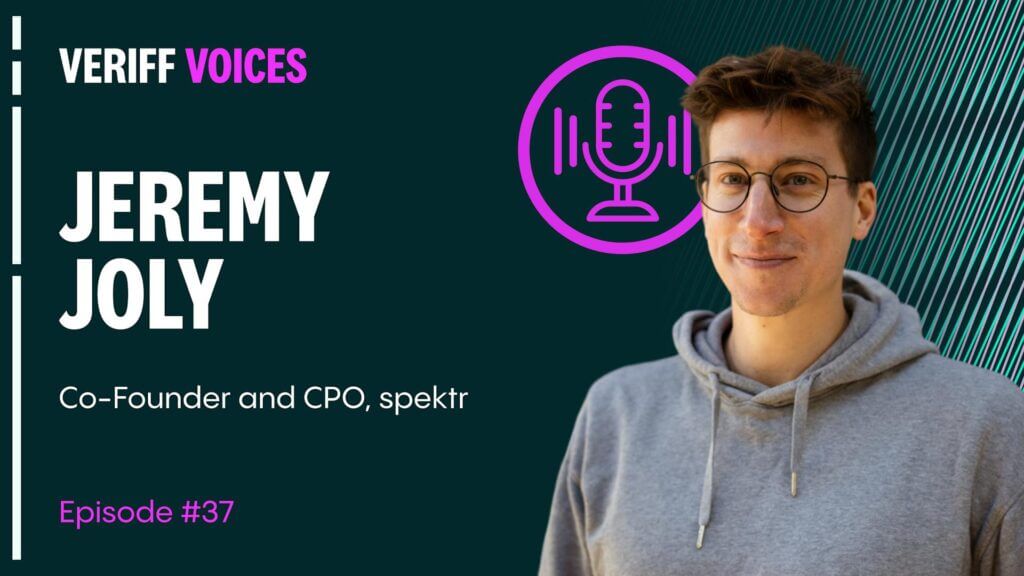Podcast
Solution engineering and the importance of collaborating with our customers
At Veriff, we value the highly productive relationships we enjoy with our clients. As Sathya Gopalakrishnan, our Director of Solutions Engineering, explains, collaborating with our customers to truly understand their challenges helps us constantly enhance our offering, enabling us to deliver tailored solutions that truly meet the evolving needs of their end users and their business.
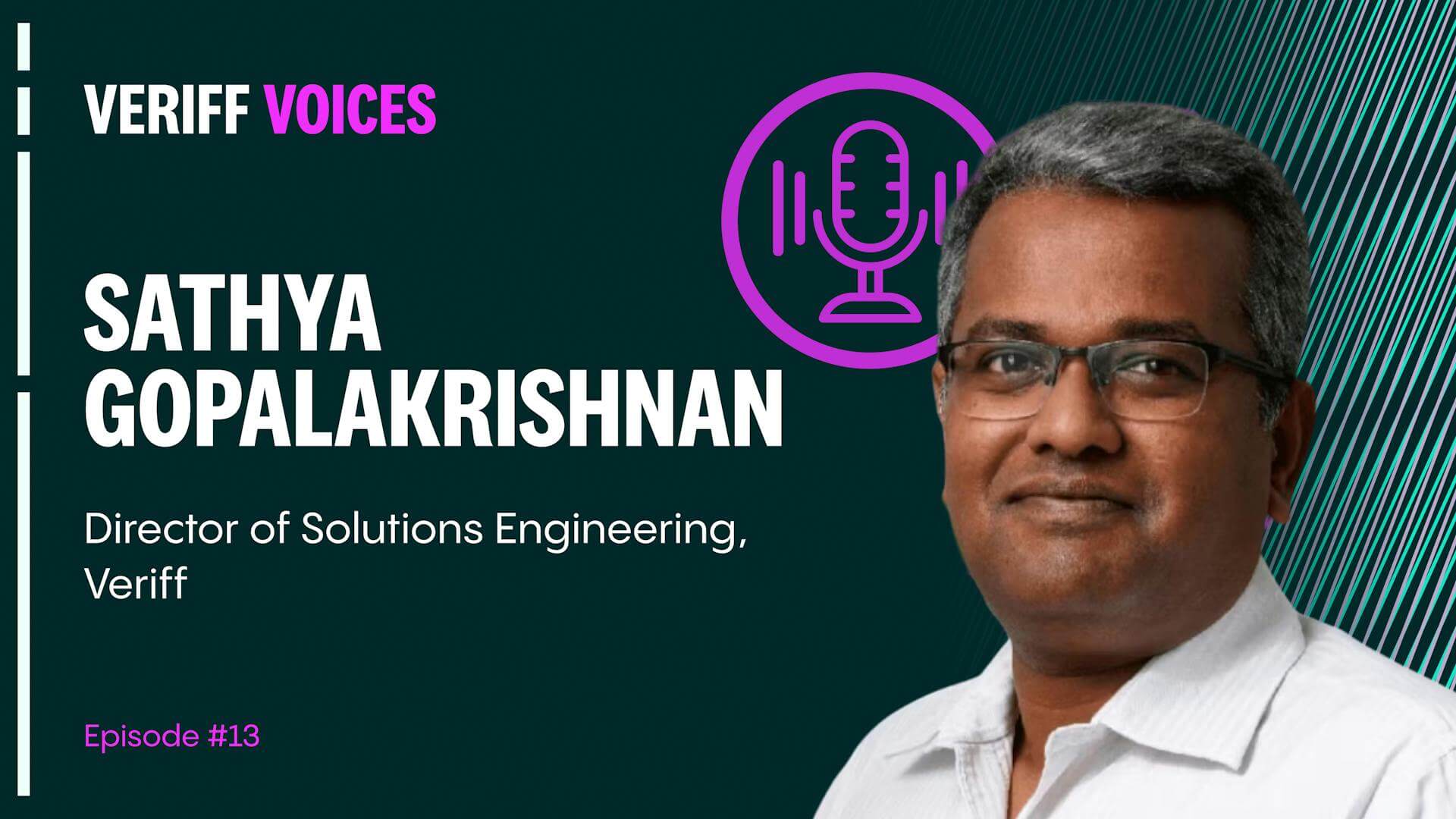
Listen to full conversation with Sathya now!
Identity verification (IDV) has rapidly become a very crowded field, as Veriff’s Director of Solutions Engineering Sathya Gopalakrishnan points out.
‘There are so many IDV providers. If you do a Google search on IDV you can get 100-plus listings,’ says Sathya. ‘What customers are looking for is what differentiates us from the others.’
So, what is it that makes Veriff’s approach – both to IDV and to customer relationships – unique?
A holistic approach
‘It involves how we serve the customer and how we look at IDV in a more holistic way,’ says Sathya. As IDV has grown in importance, clients typically want what he calls a “one-stop shop”.
‘Customers want to have a more holistic view – not just is this document okay but what else can we know about the user? So, one, customers are looking at multiple data points, and number two, they’re looking at providers who can provide these data points together.’
A trusted adviser
Sathya believes that because identity verification is both complex and constantly evolving, an ongoing customer-provider relationship is highly beneficial – if not essential – for both parties.
‘The way we build that relationship is by being their trusted adviser,’ says Sathya. ‘Understanding our customers, what their pain points are. Giving them solutions to their problems rather than creating more problems for them.’
Once that relationship of trust has been created, Sathya and his team are more able to help clients think outside the box and adopt new, more effective solutions.
‘When customers are used to seeing certain things being done in a certain way, it’s sometimes the job of a solutions engineer to challenge that, in collaboration with the customer, and open new avenues on how we can address the problem,’ he says.
At the same time, he recognizes that what at first appears to be the best solution from an external perspective can have unintended consequences.
‘Sometimes we think something is going to solve the problem and that creates a new challenge for the customers,’ he admits. Soliciting and acting on feedback is therefore an important part of the relationship.
A human-centered approach
Something Sathya is extremely enthusiastic about is what’s known as design thinking. For the uninitiated, this is essentially an iterative, non-linear design process that aims to be more human centered in its approach.
‘In very simple terms, it’s how we think of solving a problem, keeping the human or end user in focus,’ explains Sathya. ‘You can solve a problem in different ways – that’s the flexibility of technology, comments Sathya, “but does it really address the problem for the end user?’
Sathya gives the example of how someone experiences the IDV flow:
‘What is their pain point in that process? What happens after they have completed the verification? How long do you want to hold the user in that process?’ These are the kinds of questions Sathya and his team ask themselves in seeking the best solution.
‘Working with customers on implementing some of these conversations using design thinking has been really useful,’ he comments. ‘That feedback has definitely helped us improve our products and services for our customers.’
An informed process
Sathya and his team’s customer-centric approach to designing solutions is informed both by his considerable practical experience and his innate fascination with creativity and problem solving. He recommends several books for those interested in developing a truly human-centered and solution-focused design process.
‘These are some of the books I refer back to again and again, there’s always something new I find out whenever I re-read them. I’d recommend a book called The Art of Innovation. It’s by Tom Kelley and it talks about lessons in creativity. And another I keep as a bible is Games People Play. It’s a very old book from the 1960s, by a psychiatrist called Eric Berne, and it basically talks about human psychology. It’s not actually about games, it’s about how human beings interact and why they react to certain situations in a certain way.’
The difference is why
Another book that Sathya cites as key to his approach to solutions engineering is Start With Why by Simon Sinek.
‘This is very important from a solutions perspective; you need to ask that underlying question “why?”’ he comments. ‘A typical client conversation starts with “I need IDV” or “This is what I want”. But when you start trying to understand why the customer is trying to get to that, that’s when you start getting into the details of the real problem. The conversation actually needs to start with “why are we having this conversation?”.’
The book outlines different scenarios and offers different ways to ask why, something Sathya has found extremely useful in his work.
‘”Why” can offend sometimes. When you come at a problem, “why?” doesn’t always look good,’ he comments. ‘You need to ask in an appropriate way. But why is important.’
A long-term relationship
‘One thing I always encourage in my team, and I try to follow myself, is the solution mindset,” says Sathya. Everything has a solution, we just need to find it.’
However, that solution mindset is about more than finding a quick fix – it’s about understanding what the client business needs to be successful over the long term.
‘What the customer wants is not how we solve the problem for today, but how we solve the problem for the future,’ says Sathya. ‘So, it’s a long-term relationship that customers are looking for, and we at Veriff also want this for as long as we can help the customer – and that means forever!’

Veriff Voices
Listen to the full conversation with Sathya and explore more Veriff Voices podcast episodes.
